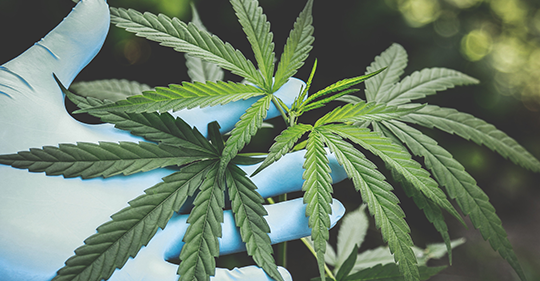
A lot has changed in the world of cannabis in the decades since Professor of Medicinal Chemistry Raphael Mechoulam’s breakthrough research. A professor at the Hebrew University of Jerusalem, he identified THC as the psychoactive substance that impacts the brain’s endocannabinoid system (ECS), the largest receptor system in the human body. Mechoulam also isolated CBD (cannabidiol) and went on to lead the world in studying the plant’s therapeutic applications.
Despite resistance from many quarters of the medical profession—which, to date, lacks systematic education about cannabis in medical school—an increasing number of therapeutic uses for cannabis continue to be reported and enthusiastically accepted by patients. Research lags dramatically.
Cannabis has long been a treatment for chemotherapy-related nausea, spasticity in multiple sclerosis, epilepsy, and sleep disorders.
Ambiguous Legal Status
Scientific investigation of the therapeutic potential of cannabis has been thwarted by the plant’s history of recreational use and its ambiguous legal status. It is illegal in many countries, widely used although not fully legal in others (in the United States, for example, marijuana is legal for medical and/or recreational use in many states, but continues to be categorized at the federal level as a controlled substance with no medical value).
Because of its ambiguous status, first, research into standardizing THC and CBD values in cannabis, and, second, proper clinical research lag sadly behind the high levels of acceptance of cannabis by the public.
Chronic Pain
Anecdotally, cannabis has gained a reputation for helping with the treatment of chronic pain, a widespread problem. Conventional medicine has had limited treatment success with this growing problem. The radical failure of conventional medicine to relieve patients’ pain accounted, in part, for the deadly opioid epidemic. To reduce their use of opioids and other pain medications, suffering patients may find their own avenues for relief.
A recent study published online in JAMA Network Open (January 6) by Mark C. Bicket, MD, Ph.D., assistant professor, Department of Anesthesiology, and director, Opioid Prescribing Engagement Network, University of Michigan, Ann Arbor, and colleagues found that nearly one-third of a representative American adult sample of 1,724 patients with chronic pain reported using medical cannabis to manage pain, with more than half of them decreasing use of other pain medications, including opioids.
Two psychiatrists recently took to the pages of the Wall Street Journal to share their experience with a geriatric population that was already using marijuana for chronic pain and insomnia, and to help manage psychiatric symptoms. Drs. Greenstein and Solomon were particularly interested in the possibility that certain pharmaceutical forms of cannabis may help soothe the agitation and psychotic symptoms that often accompany advanced Alzheimer’s disease. Theirs is a passionate plea for opening up funding sources and removing legal obstacles to research on this remarkable plant.
It is time for both governments and medical education to rise to the promise—and the perils—of cannabis. THC and CBD need to be standardized in their various forms so that they can be studied deeply and used safely and effectively.
Cannabis has come a long way since Dr. Mechoulam started to work with it in the mid-20th century. Now 92 years old, Mechoulam, the “father of cannabis research” must be very proud of his “children” and the ongoing promise of his pioneering research.
Let’s make sure that promise is fulfilled.
References
Greenstein and Solomon, “How Cannabis Can Help the Elderly”, WSJ, 4 February 2023
